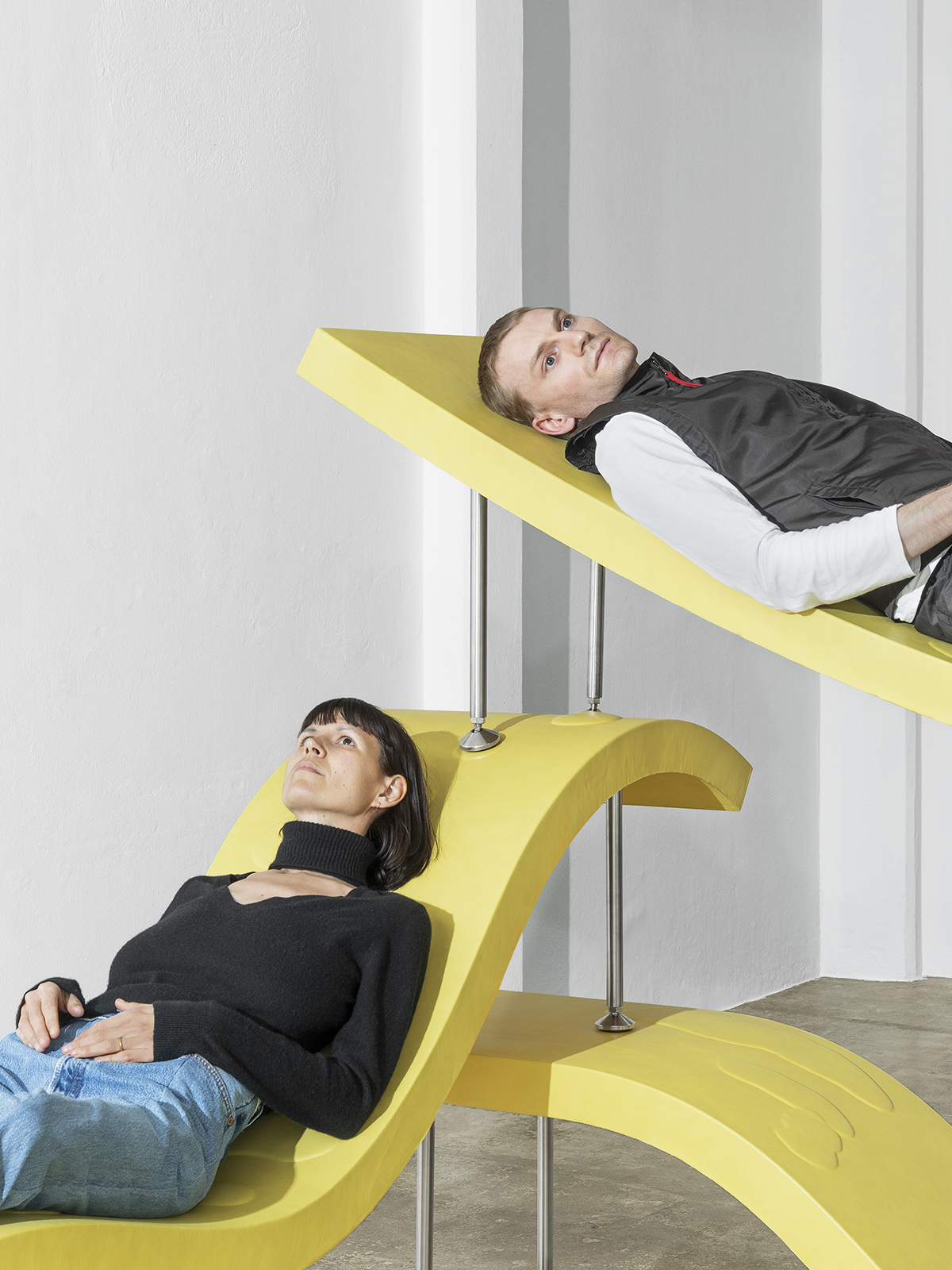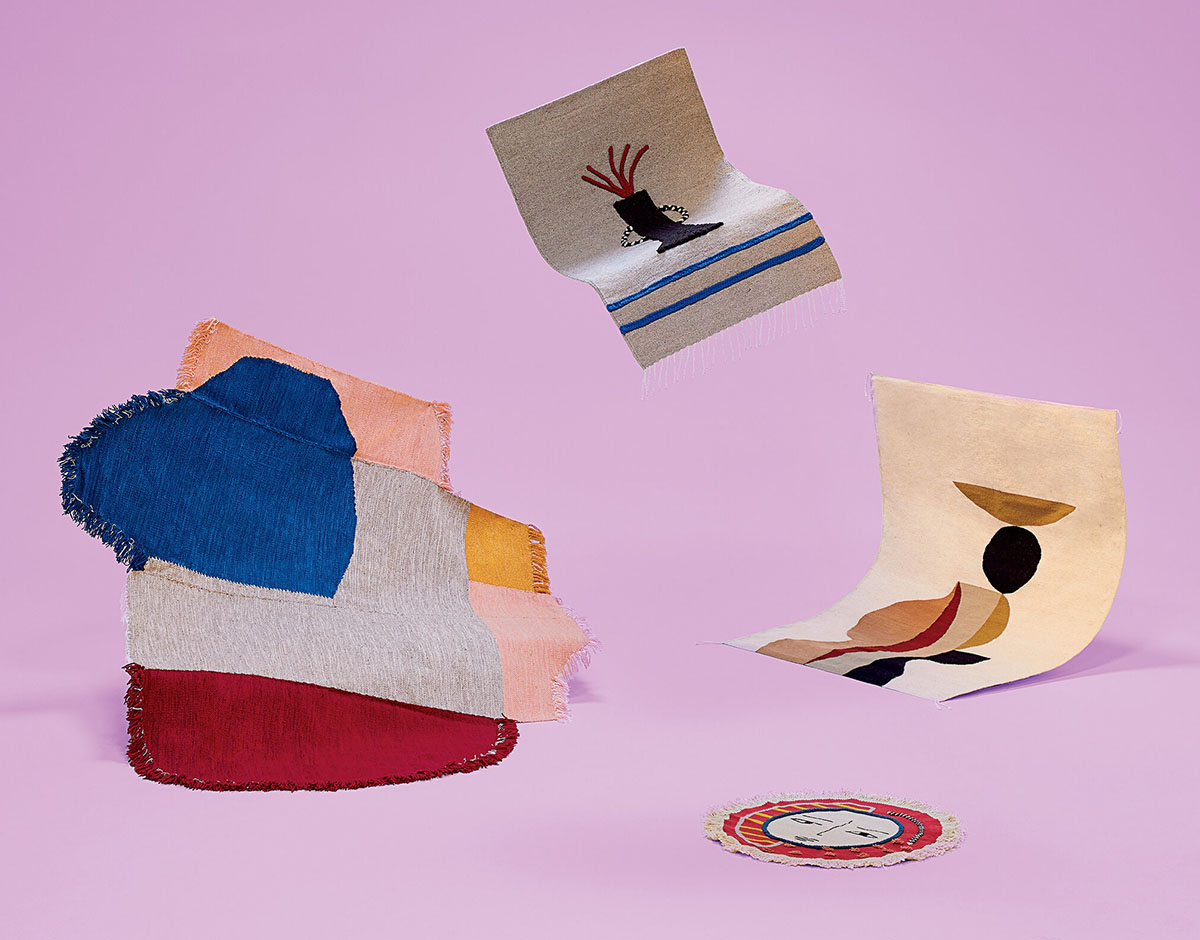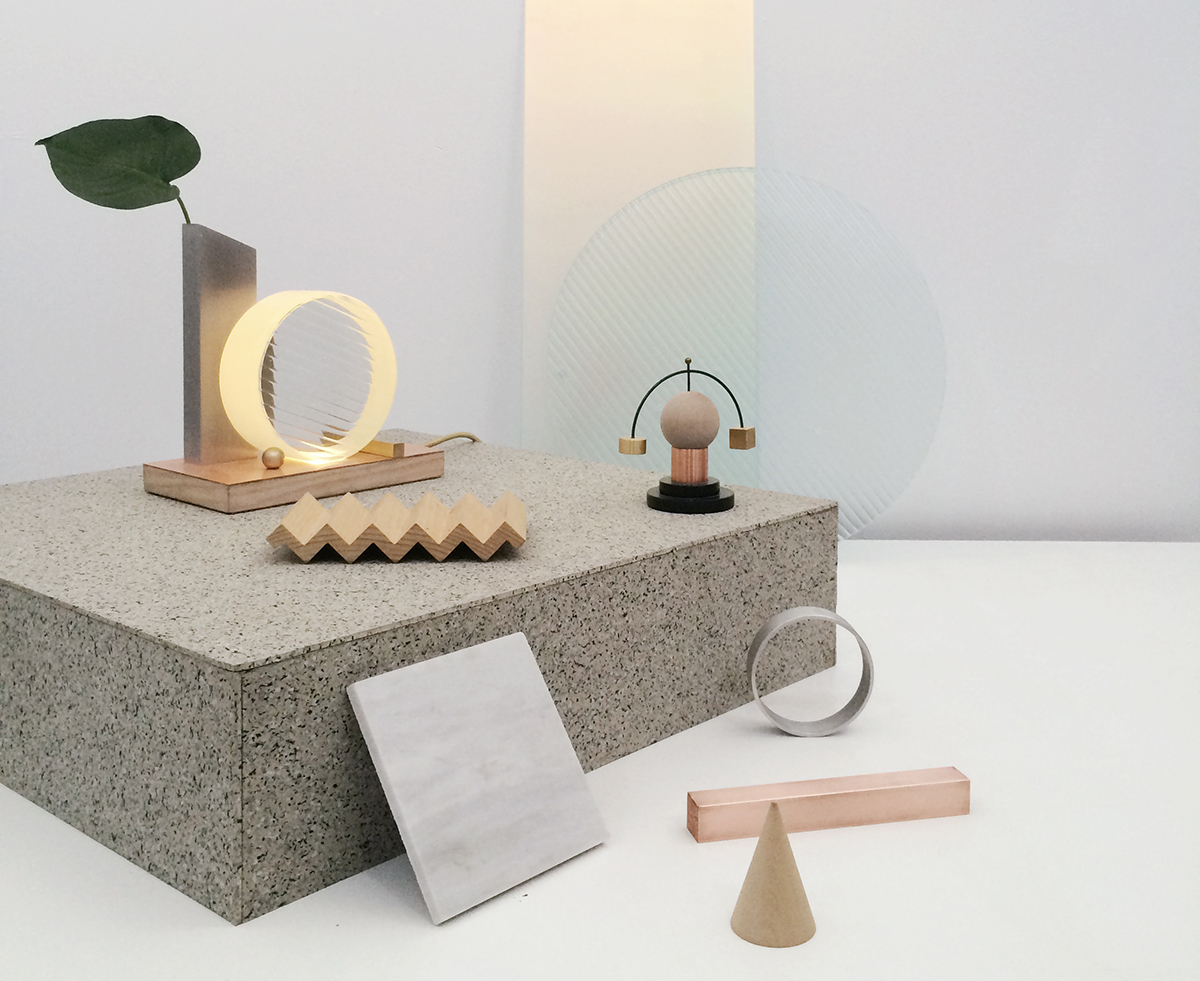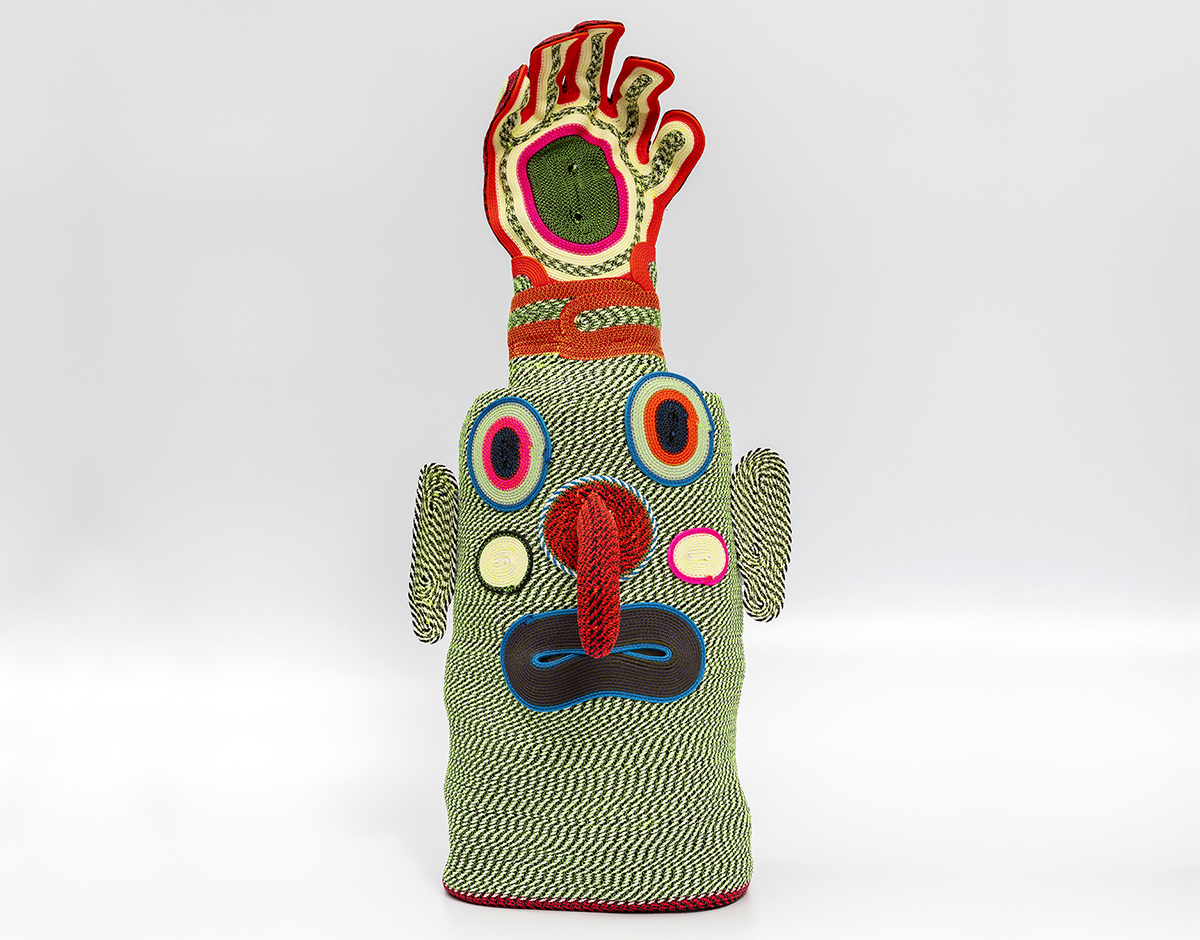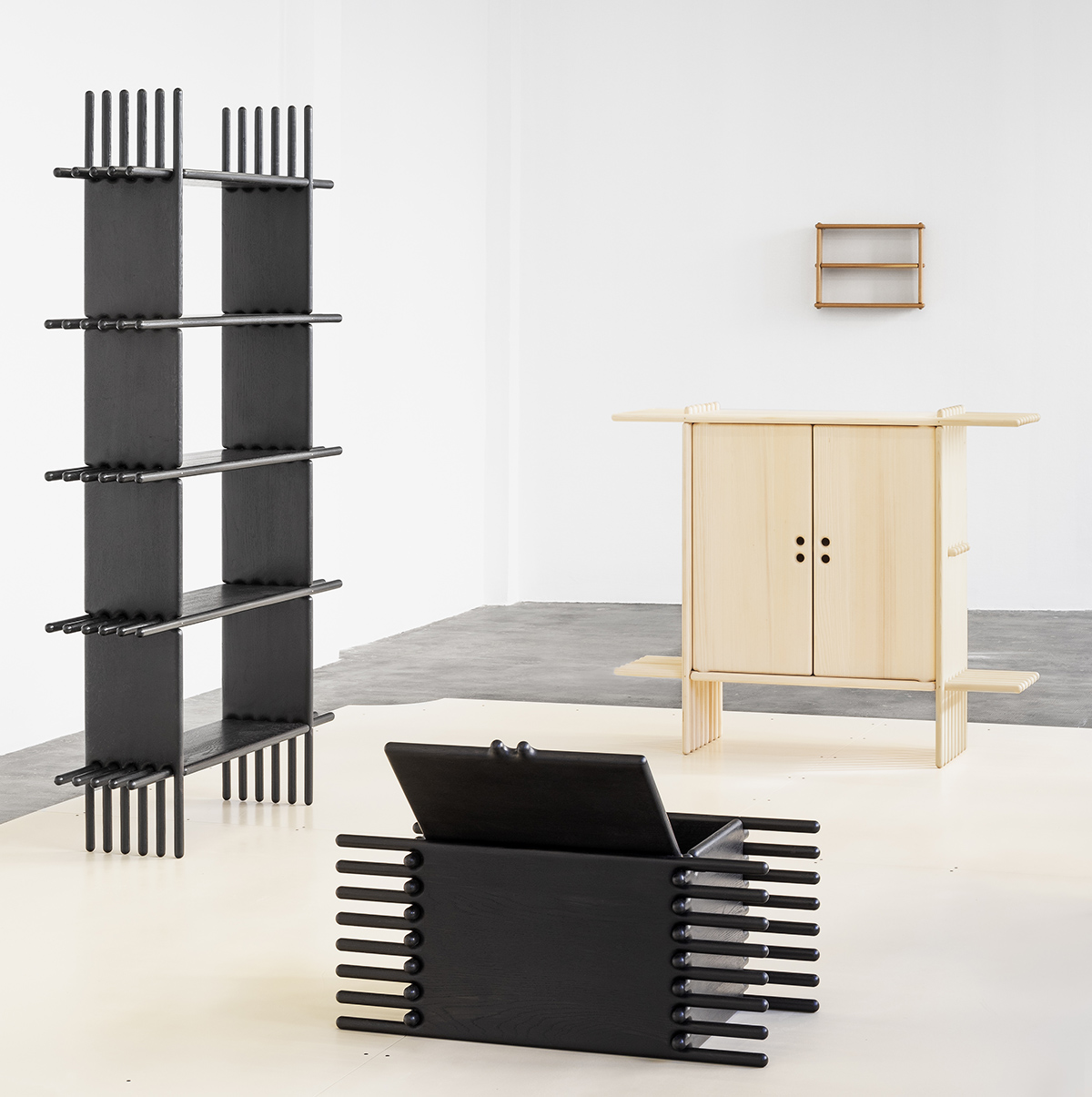
05.05.21
Excerpt: Exhibition
Blistered Leather and Melted Aluminum — Soft Baroque’s New Works Were Inspired By the Sun
After a year of pretty much everything being on hold, we’re finally seeing the fruits of some of that pre-COVID labor. For those of us here in Milan, that means projects originally slated for the canceled 2020 Design Week are at last seeing the light of day. One of the better projects to have made it out the other side is Sun City, a collaboration between PIN-UP magazine, Soft Baroque, and Marséll, the Milanese footwear brand. Set over three levels in Marséll’s headquarters in an ex-factory in the Porta Romana district, Soft Baroque debuted — during the Digital Design Days in April — a slew of new work, each piece loosely inspired by the sun. Each floor had a different theme — Sun Life, Sun Destruction, and Sun Worship — featuring pieces that ran the gamut from UV-blistered tanning beds, Ikea-inspired cannabis growing cabinets, melty bent-aluminum chairs, distorted Shaker-style woodworking, and some interesting use of Kevlar. We chatted with Nicholas Gardner and Saša Štucin of Soft Baroque to find out more about the concepts and inspiration behind the exhibition.
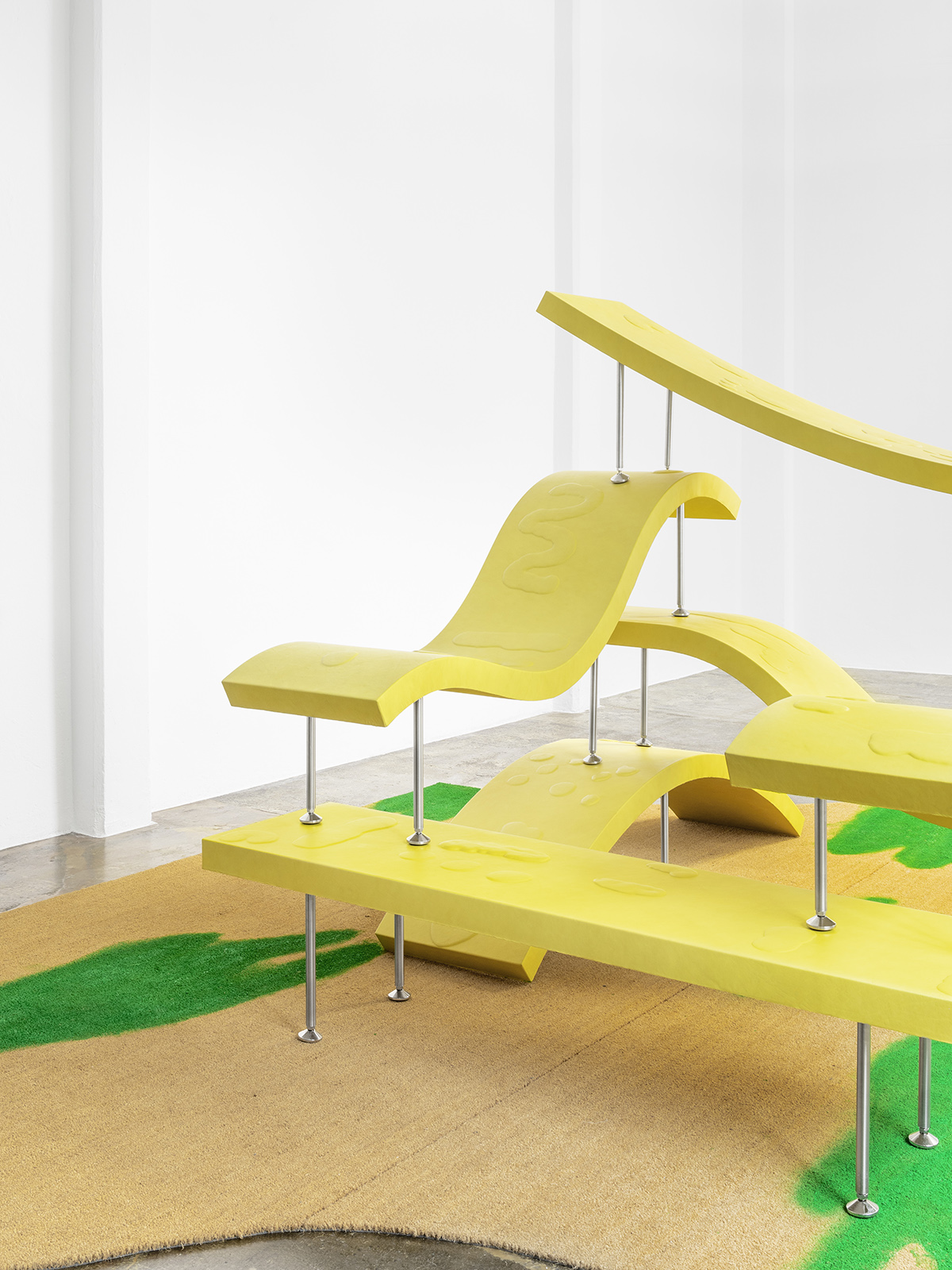
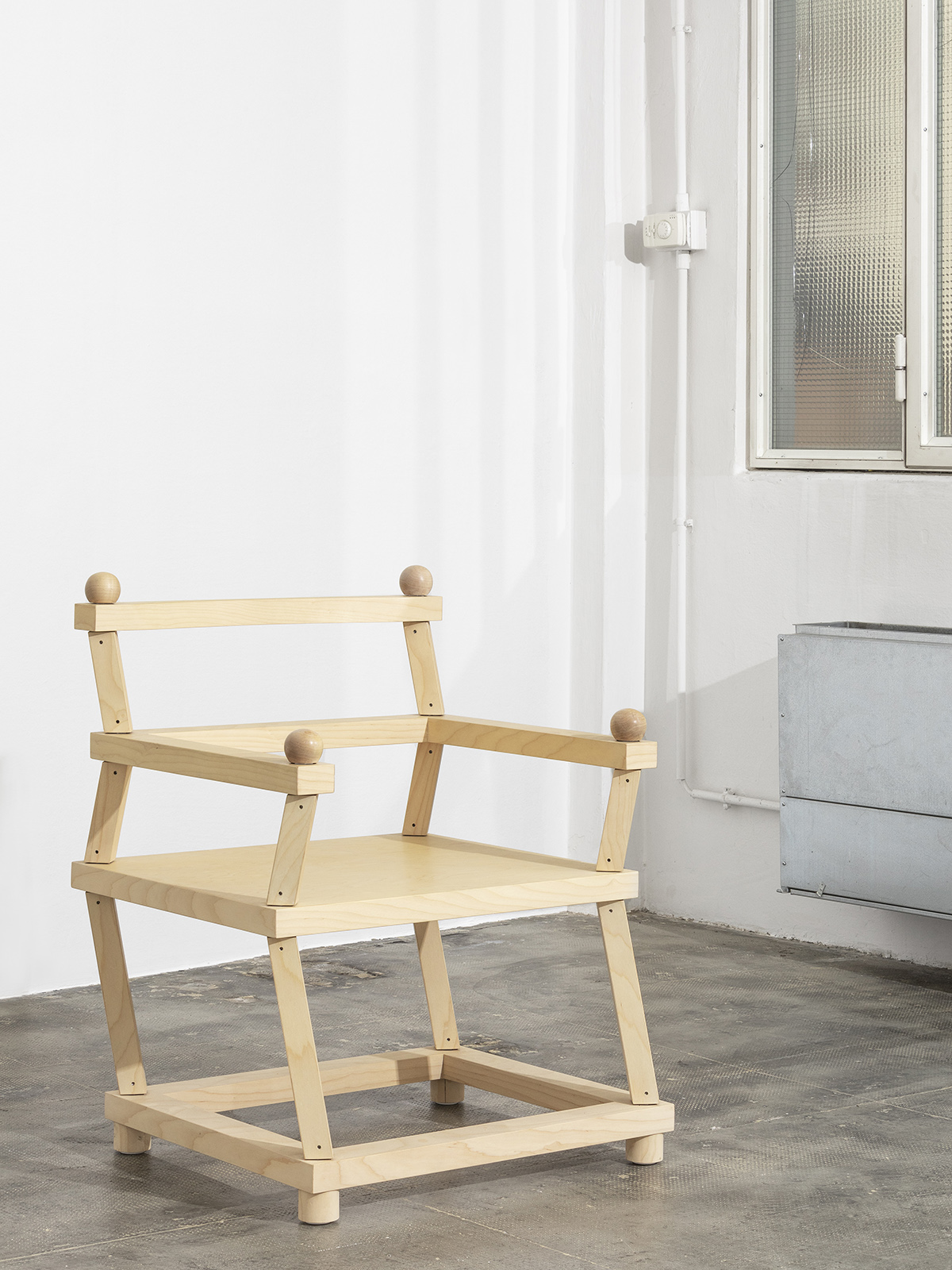
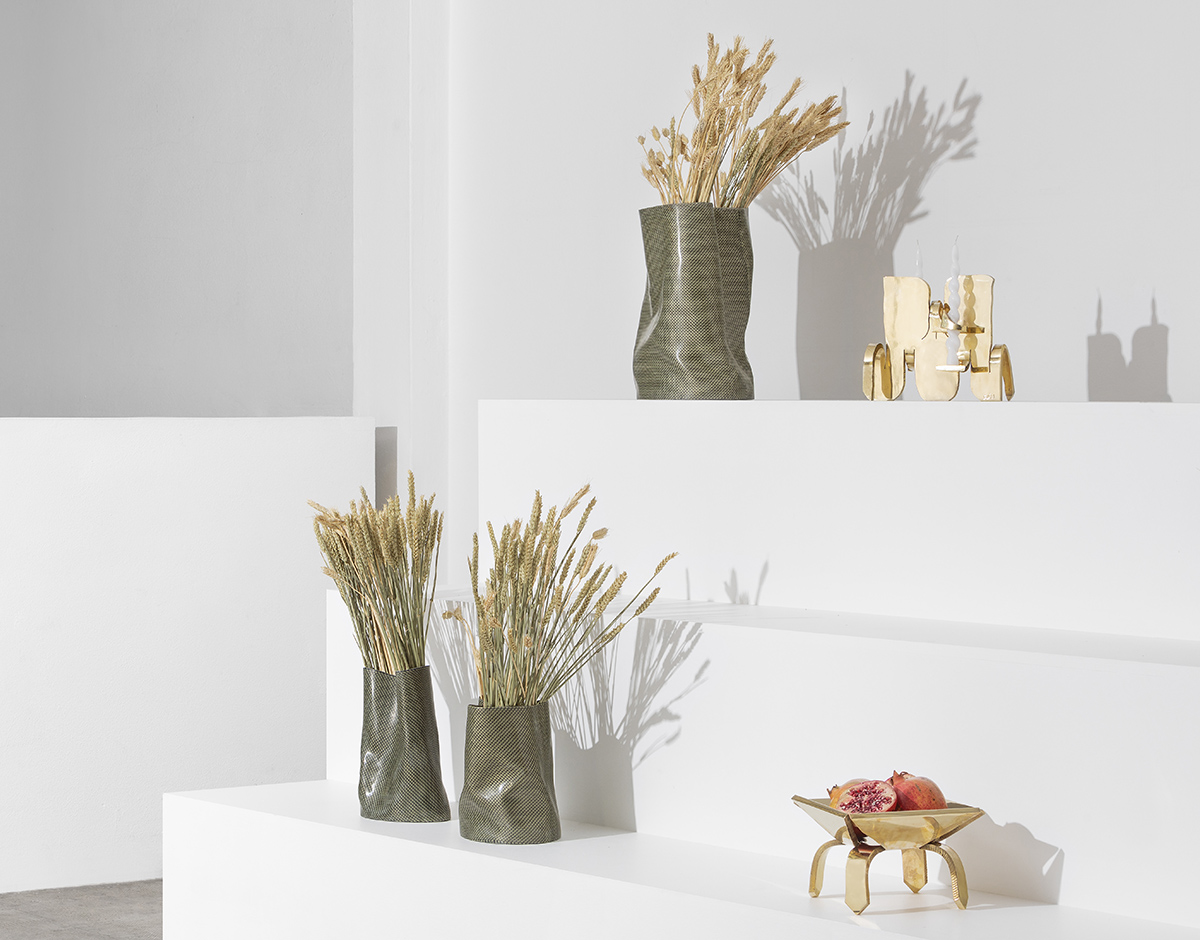
The exhibition is a collaboration between PIN-UP, footwear brand Marséll, and Soft Baroque. Can you tell me how the exhibition came about and why you chose to stage it in Milan?
The project was set up by Felix from PIN-UP magazine; it was really his baby. He was approached by Marséll to do a collaborative project with them in their space in the context of the Milan furniture fair. This was happening before COVID, so it’s been delayed by a year, but we’ve stuck with it and tried to make it happen over various postponements and rescheduling and cancellations and things like that. We’re super glad that we did and we feel like it was quite successful in the end, despite all the setbacks.
You describe the concept of the exhibition as “Inspired by the sun, both its life-giving and destructive potential.” Why does the topic of the sun interest you creatively?
It originally was planned to coincide with the Sun issue PIN-UP published a year ago. We just thought it was an interesting topic in relation to obviously global warming, but also in relation to the way that we viewed this ball of energy and how it’s slipped into the back of our minds. We just thought we would sort of address the elephant in our solar system.
The exhibition was spread out over three floors of Marséll’s headquarters in Milan, with each floor dedicated to a different kind of relationship with the sun: life, destruction, and worship. Can you explain the ideas behind the three spaces?
The three spaces that we divided this exhibition into are sun life, sun damage, and sun worship. In the sun damage area on the ground floor, we decided to basically riff on objects melting in the sun. We’re fascinated by the idea of unnatural materials changing, fading, and becoming distorted. That has an aesthetic appeal to us conceptually. In general, I think that the destructive aspect of the sun is a greater focus right now, because of global heating and global warming and our role in that. So we’re riffing on it.
There’s a chair there in front of an LCD screen showing one of the highest resolution videos of the surface of the sun. It’s this boiling, cracking, undulating surface. The chair looks slumped over like a piece of wet cardboard, but it’s made of aluminum, so we’ve called it Soft Metal. It’s a little scenario that allows you to stare directly into the surface of the sun, which you can’t do in your everyday life.
When you go downstairs into the basement, the darker space, we essentially made our own grow room. So we’ve got these really toxic full spectrum grow-lights. We borrowed some cannabis plants from a local grower outside of Milan and we made this furniture to accompany it. It’s a little bit like the antithesis of life and growth in a way. It’s our ambition to replicate that through the consumption of electricity.
When we move up to the top floor — closest to God, as it were — we’re in the sun worship room. A lot of these pieces reference various traditions that have a connection with religion and furniture making. For example, Shaker furniture and other utopian sects throughout the US and Europe, where there is a connection between craft and the practice of your religion. And the way that Shaker furniture in particular has become fetishized as a style of everyday home decor that’s very much part of the capitalist system — it’s the antithesis of its original purpose. So, in that top room, it’s all about religious iconography and distortions of that, as well as its connection with making and craft.
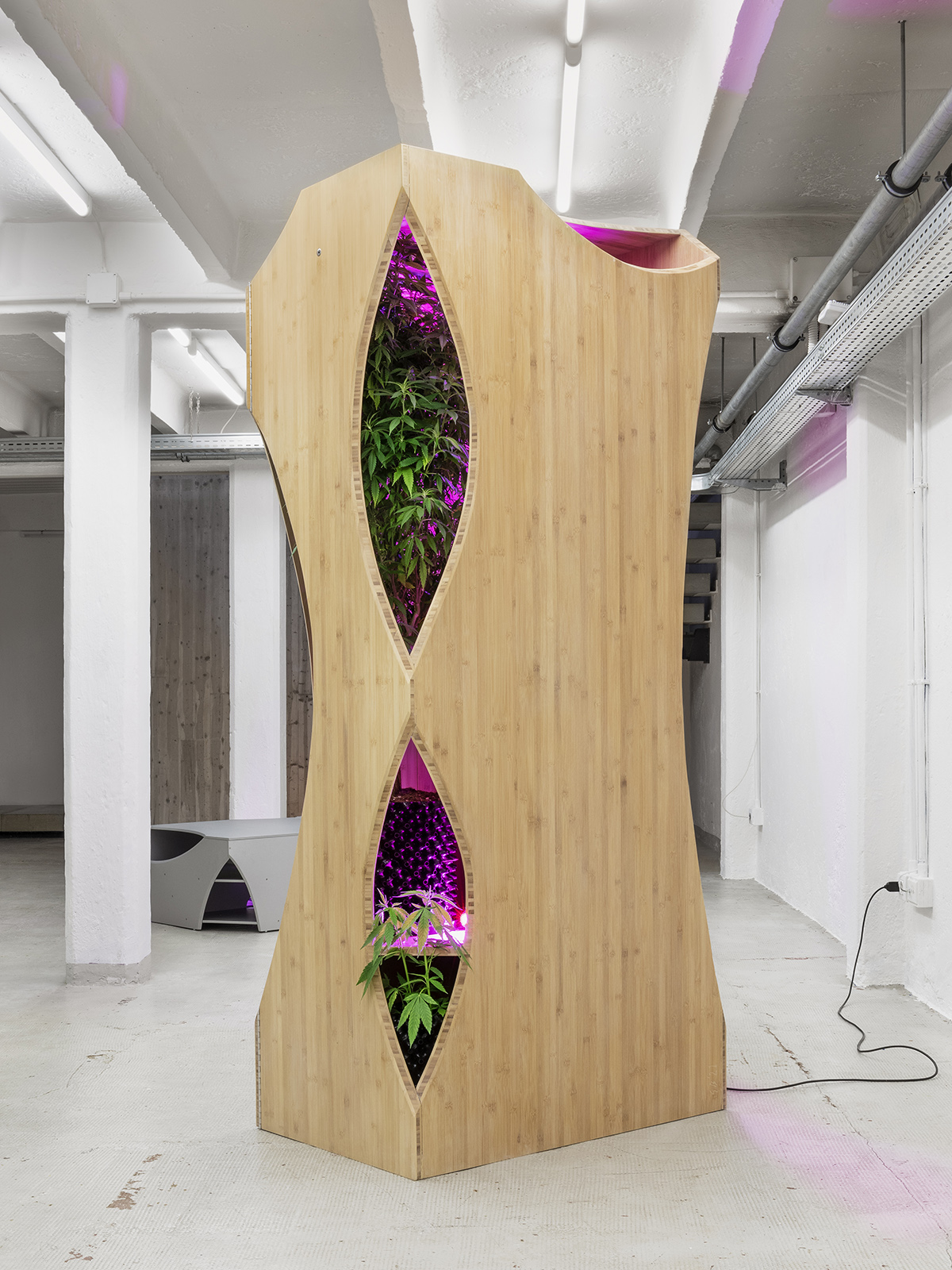
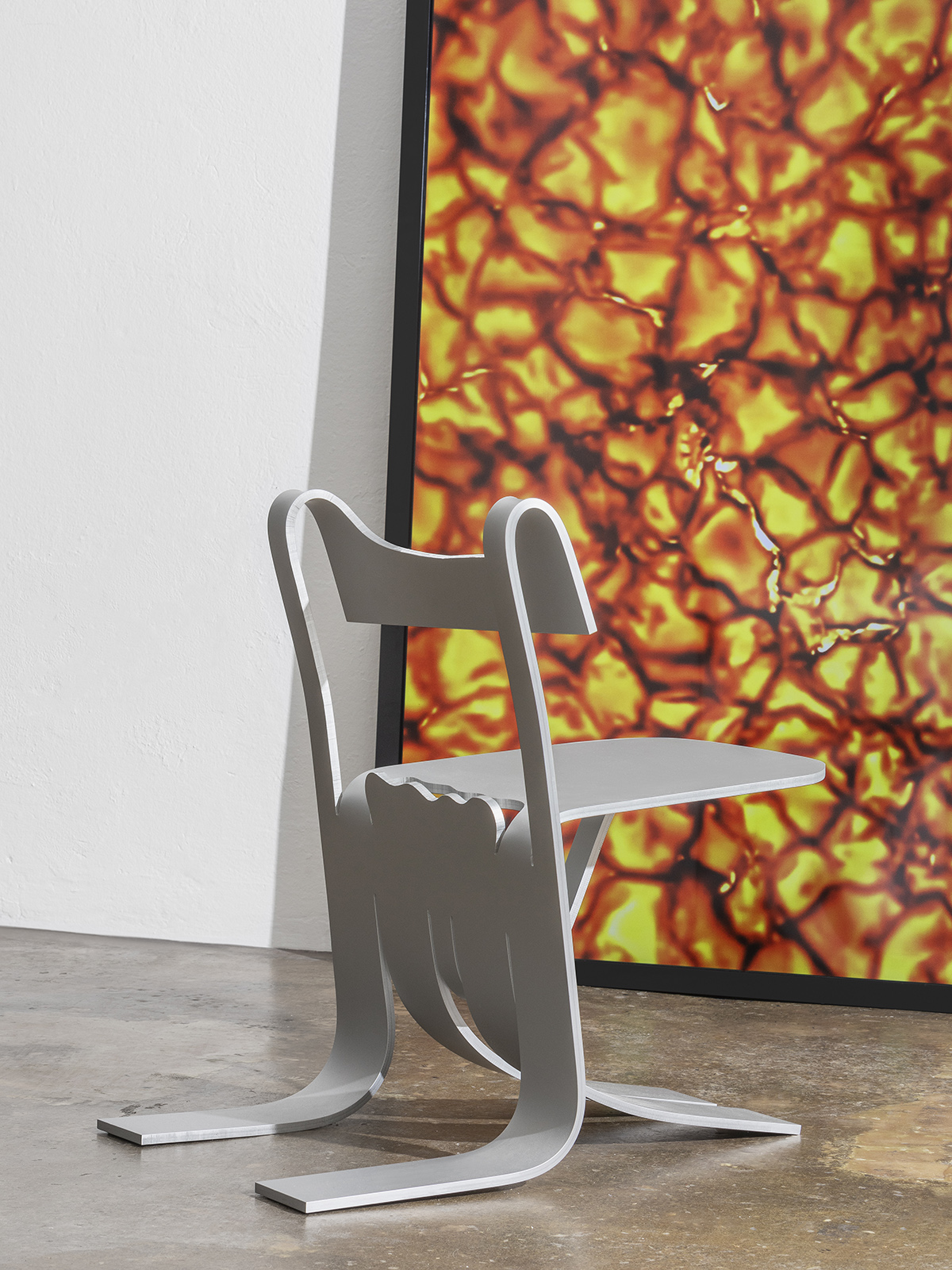
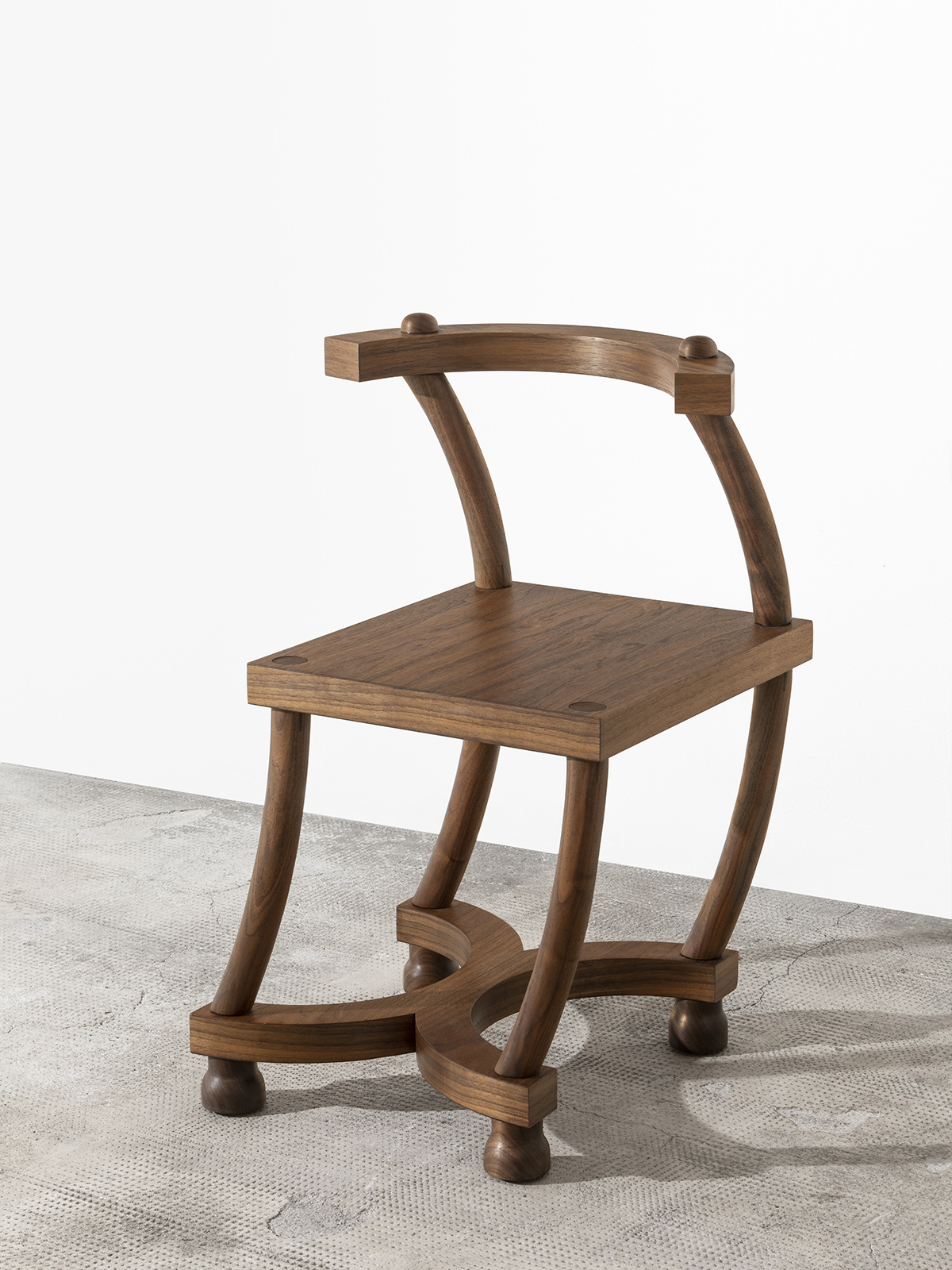
The collaboration with Marséll resulted in them manufacturing the yellow ‘Tan’ sunbeds. What was the design and production process like between you and the brand?
We made the carcass in Slovenia, then they have a workshop outside Venice where they did the upholstery — so it was a collaboration just in terms of making. The artisan leather workers are extremely professional and they did an amazing job covering these plywood shells. We like the idea of these pieces being a little bit anthropomorphic, like people like lying and sweating in the sun. And so leather was a kind of a distinct proxy for our skin bubbling and blistering and melting.
There are a lot of really interesting materials used in this new collection, specifically the Kevlar vases and Tufnol chair. Can you tell me about your process of material research, what exactly the materials are and how you produced these pieces?
We’re constantly trying to find new materials that are interesting to us. Both from a working level, but mainly from a symbolic level. Like, what does this material mean? What does it look like? How does it feel? How does it place itself in a subtext of consumer society? For example, Kevlar. It has a very high-performance aesthetic, but it’s also extremely fetishized and masculine. To the extent where you can buy replication vinyl of this type of texture and put it on your car bonnet or whatever. So, I think for us to make a very decorative object like a vase with these very distorted, irregular forms, for us, made sense.
As for the Tufnol, Chair, it’s, the material itself is phenolic resin bonded with layers of linen and it’s a very old plastic type. I think it was invented in the 1920s when it was used as a material instead of metal. For example, you would use this material for gears and bearings and other industrial purposes. But it’s still used in a niche area when there needs to be something that can’t rust or be too heavy while having good wear resistance. And so, this material itself was attractive because it actually looks a lot like wood, particularly when you carve through the layers of linen — it’s almost like the rings on a tree. So there was a process of transmutation about how we used this very unusual niche material in a way that speaks about the change around the time that this material was invented, from craft into industry.
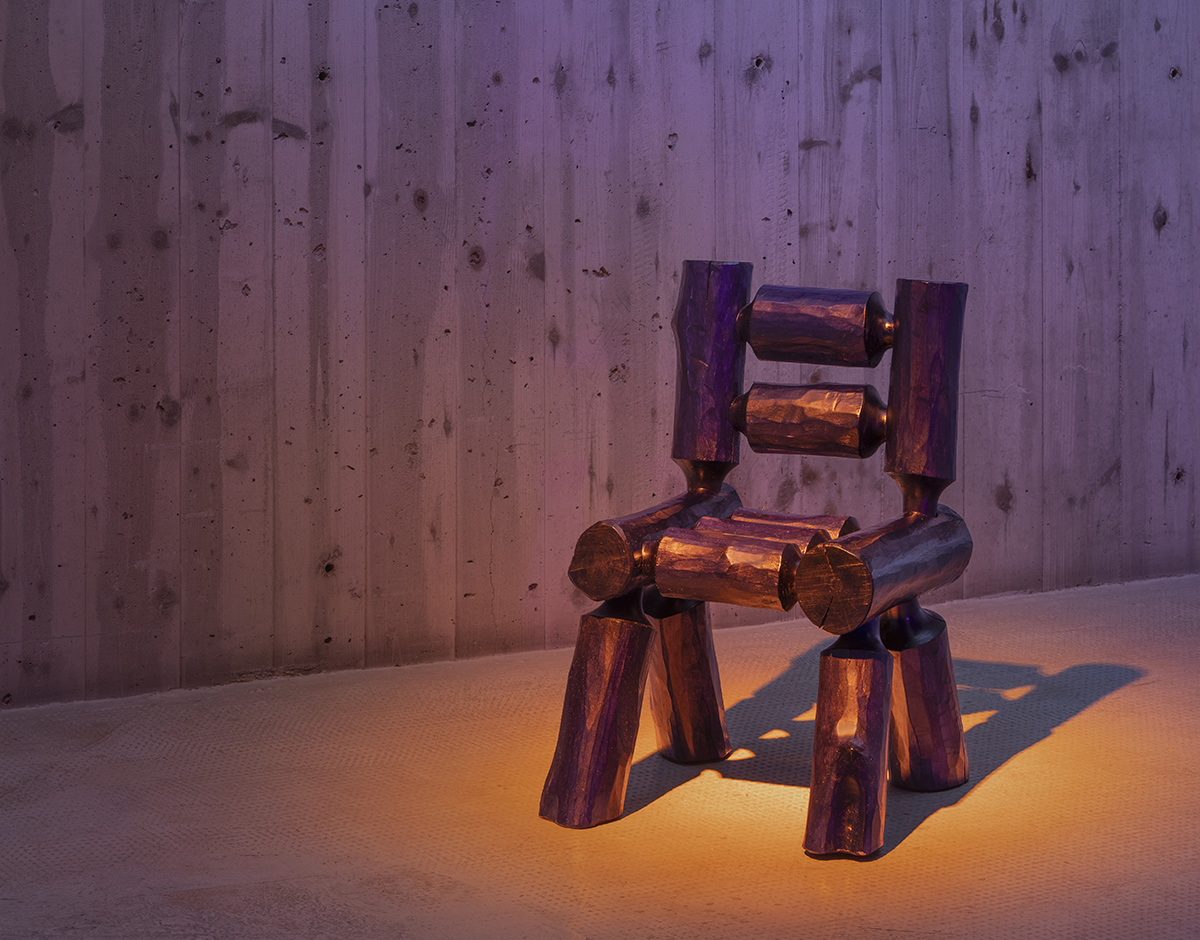
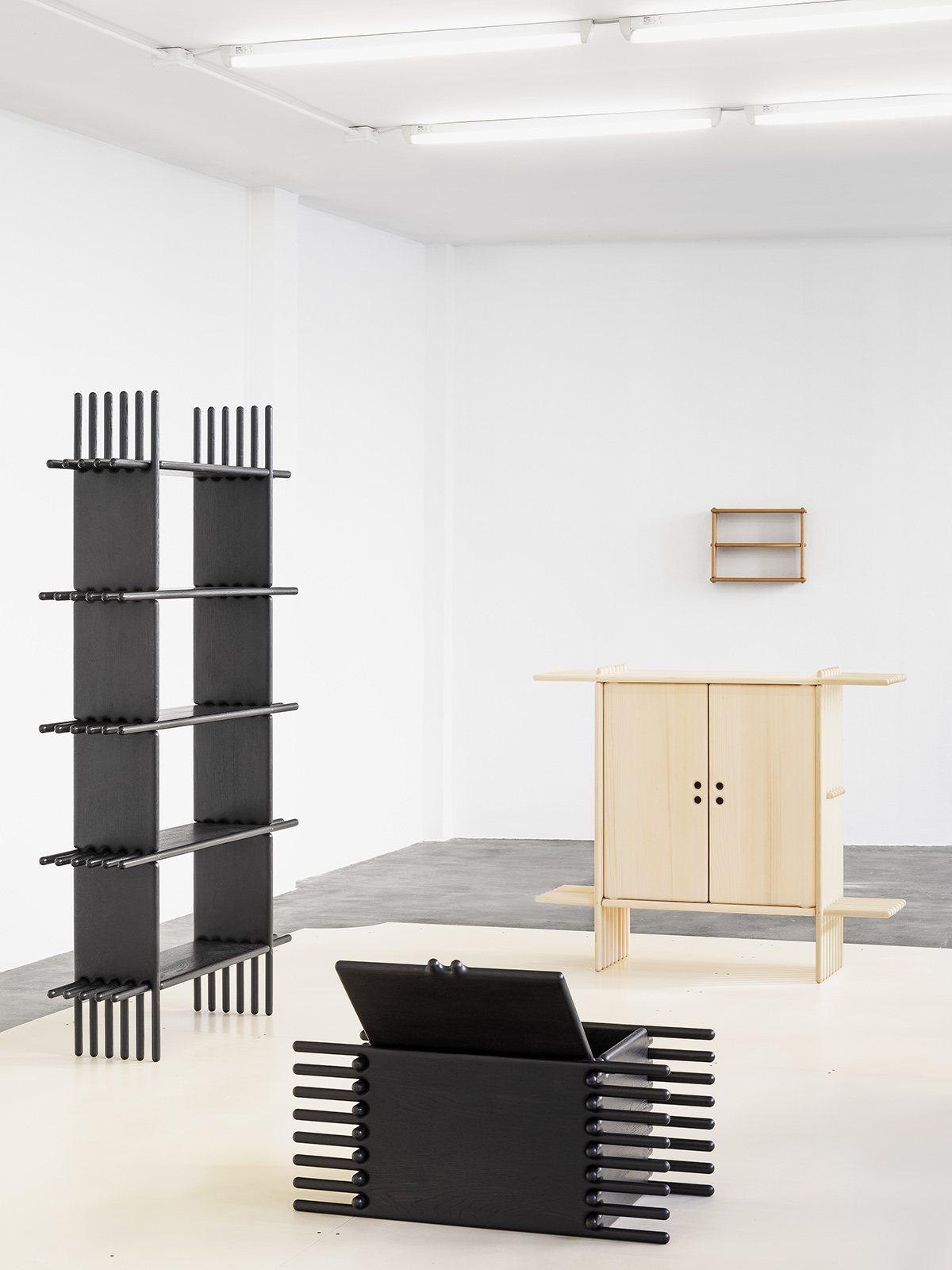
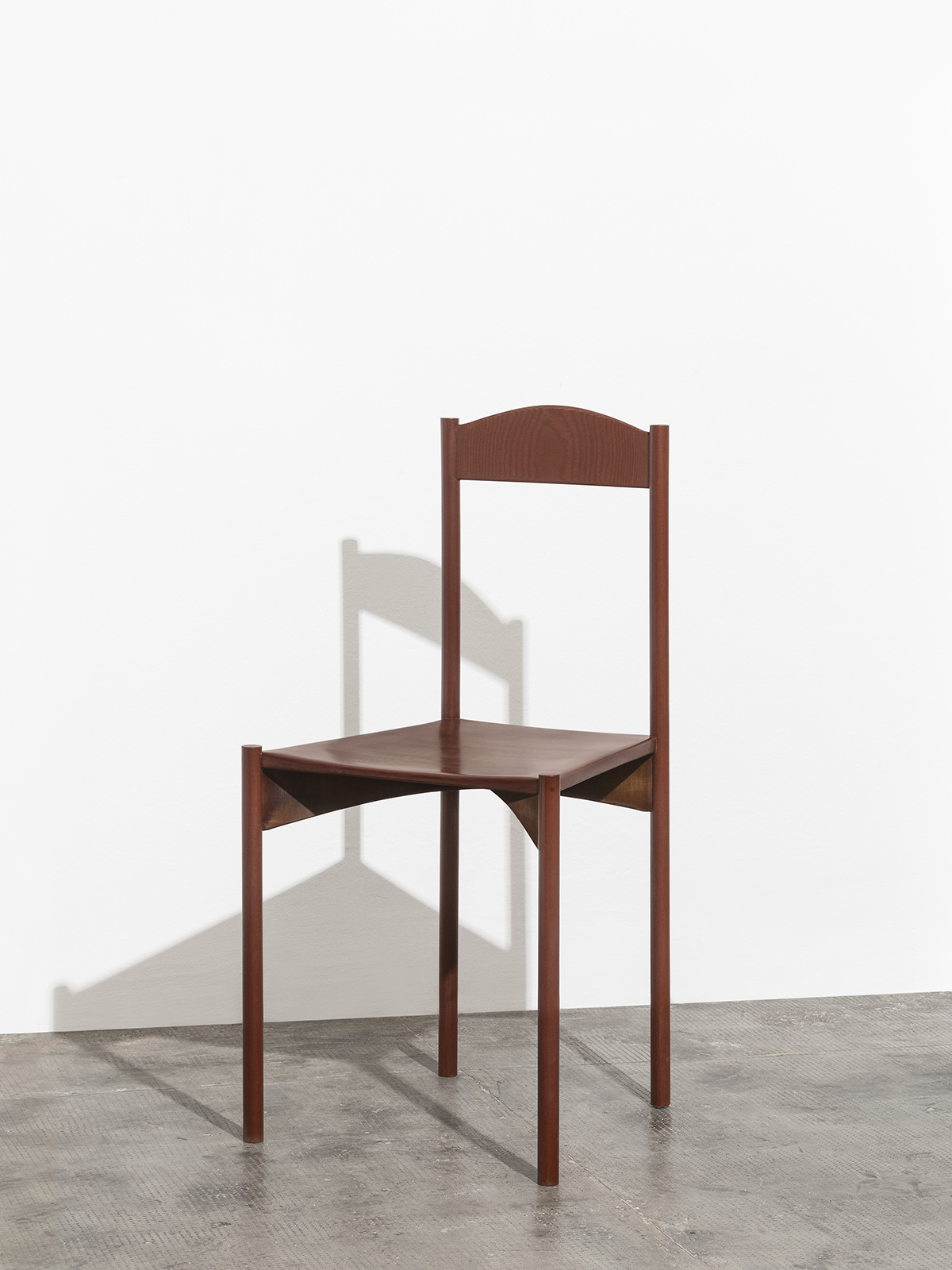
One of the stand-out parts of the exhibition are those wooden shelves with interlocking joinery. Can you tell us how you came up with that construction, how you made them and what the concept behind them was?
This is what we call the Lipos series, referring to the word for skin or fat or in Greek. It’s essentially a kind of wooden joinery that is often used as a mark of quality, or a mark of something handmade or hand-produced, or is synonymous with solid wood construction. It has its own decorative aesthetic in a way. So we basically flattened that out and made it almost rounded. So everything locked together in a way that looked like fat fingers or inflated traditional wooden joinery. They’re extended out beyond what is necessary — strangely stretched-out cartoon versions of a very humble, traditional chair or sideboard. It’s a bit like taking a design trope or niche and exaggerating it to a new place that we think says something about our interests.
As for the process itself, it started with actually making something that looked a little bit more like fingers. We started with this idea of finger joints — interlocking like if you were clasping your hands together on your lap. And so we basically just took that idea and replicated it out into a joinery system. But it does make a lot of sense in a way because all the hinges are integrated and the joints lock in a way that’s not very structurally sound, but we’ve constructed them in a way that doesn’t wobble or distort and there isn’t a back panel that can hold the whole thing structurally rigid.
